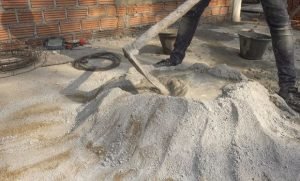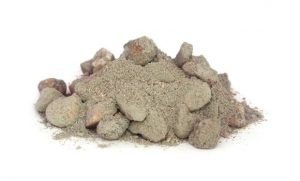Asia: Leading the Growth of Cellulose Ether
MIKEM Information Asia: Leading the Growth of Cellulose Ether Asia: Leading the Growth of Cellulose Ether According to the latest report from IHS Markit,
The durability of the concrete is the ability of the concrete to resist climate change, chemical attack, abrasion, or any other damaging process. When exposed to an environment of extreme weather, the durable concrete should maintain its shape, quality, and function of the application. The freeze-thaw damage of concrete is one of the main problems of building aging disorder in the low-temperature areas, which seriously affects the long-term use and safe operation of buildings. For these building projects to continue to play their roles and benefits, the relevant party needs to pay a hefty price for the repair and reconstruction. This phenomenon has become one of the main problems in the durability of concrete.

The frost resistance of concrete is mainly related to the internal pore structure of the concrete, the age of freezing, the degree of water saturation, the strength of the concrete, and other factors. The pore structure of the concrete plays a crucial role in the frost resistance of the concrete. The pore structure and strength of the concrete mainly depend on the maintenance method of the concrete, the water-cement ratio in the concrete production process, and whether or not additives are applied.
 The water-cement ratio: The water-cement quotient is an essential parameter for designing the concrete. Its change affects the content of freezable water content in the concrete, the average air bubble distance and the strength of concrete, thereby affecting the frost resistance of concrete. The larger the water-cement ratio, the more freezable water content in the concrete, and the faster the freezing speed of the concrete; The worse the bubble structure, the larger the average bubble distance; The lower the concrete strength, the worse the resistance to freezing and thawing. The addition of superplasticizer can reduce the water-cement ratio and reduce the amount of water that can be frozen, which can reduce the pressure caused by the freezing of water into ice;
The water-cement ratio: The water-cement quotient is an essential parameter for designing the concrete. Its change affects the content of freezable water content in the concrete, the average air bubble distance and the strength of concrete, thereby affecting the frost resistance of concrete. The larger the water-cement ratio, the more freezable water content in the concrete, and the faster the freezing speed of the concrete; The worse the bubble structure, the larger the average bubble distance; The lower the concrete strength, the worse the resistance to freezing and thawing. The addition of superplasticizer can reduce the water-cement ratio and reduce the amount of water that can be frozen, which can reduce the pressure caused by the freezing of water into ice; The nature of the raw materials forming the concrete affects the frost resistance of the concrete directly. For example, from 70% to 93% of the total concrete raw materials are stones and sand, the quality of these primary raw materials is directly influencing the frost resistance of the concrete. The quality of these primary raw materials mainly includes the degree of weathering, firmness, impurity content, clay content and the like. Besides the quality as mentioned earlier, the moisture absorption and permeability of these primary raw materials also have an impact on the frost resistance of the concrete. This phenomenon occurs mainly because the change in the moisture and strength of the primary raw materials inside the concrete vary the volume of the needle-shaped rock. This volume deviation will damage the hardened cement mortar and the concrete surface.
The nature of the raw materials forming the concrete affects the frost resistance of the concrete directly. For example, from 70% to 93% of the total concrete raw materials are stones and sand, the quality of these primary raw materials is directly influencing the frost resistance of the concrete. The quality of these primary raw materials mainly includes the degree of weathering, firmness, impurity content, clay content and the like. Besides the quality as mentioned earlier, the moisture absorption and permeability of these primary raw materials also have an impact on the frost resistance of the concrete. This phenomenon occurs mainly because the change in the moisture and strength of the primary raw materials inside the concrete vary the volume of the needle-shaped rock. This volume deviation will damage the hardened cement mortar and the concrete surface.According to MIKEM’s experience and test, the preferred method to improve the frost resistance of concrete is to add concrete superplasticizer or air-entraining agent into the concrete. The relevant party can add superplasticizers to reduce the water-cement ratio and reduce the water consumption of freezable water. By doing so, the relevant party can reduce the expansion pressure caused by the freezing of water into ice: the air-entraining agent can accommodate the colossal expansion pressure caused by the freezing of water in the concrete into ice.

MIKEM is a global manufacturer and supplier of specialty chemical products. We are committed to becoming your preferred partner in specialty chemicals with our competitive product portfolio, strong R&D capabilities, and professional formulation expertise .
MIKEM Information Asia: Leading the Growth of Cellulose Ether Asia: Leading the Growth of Cellulose Ether According to the latest report from IHS Markit,